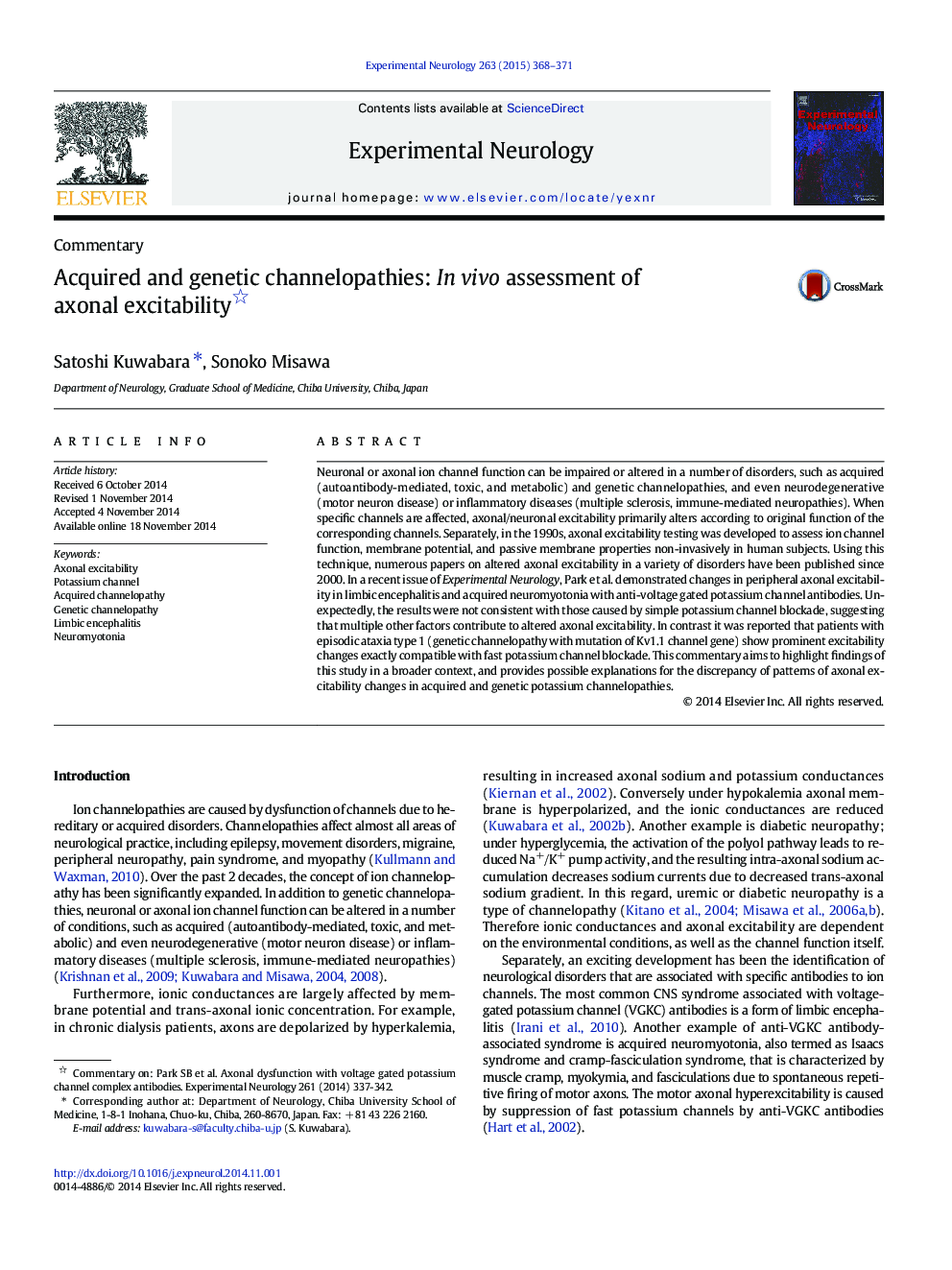| کد مقاله | کد نشریه | سال انتشار | مقاله انگلیسی | نسخه تمام متن |
|---|---|---|---|---|
| 6017487 | 1580170 | 2015 | 4 صفحه PDF | دانلود رایگان |
عنوان انگلیسی مقاله ISI
Acquired and genetic channelopathies: In vivo assessment of axonal excitability
ترجمه فارسی عنوان
کانالوپاتیهای به دست آمده و ژنتیکی: ارزیابی تحریک پذیری آکسون در محتوا
دانلود مقاله + سفارش ترجمه
دانلود مقاله ISI انگلیسی
رایگان برای ایرانیان
کلمات کلیدی
موضوعات مرتبط
علوم زیستی و بیوفناوری
علم عصب شناسی
عصب شناسی
چکیده انگلیسی
Neuronal or axonal ion channel function can be impaired or altered in a number of disorders, such as acquired (autoantibody-mediated, toxic, and metabolic) and genetic channelopathies, and even neurodegenerative (motor neuron disease) or inflammatory diseases (multiple sclerosis, immune-mediated neuropathies). When specific channels are affected, axonal/neuronal excitability primarily alters according to original function of the corresponding channels. Separately, in the 1990s, axonal excitability testing was developed to assess ion channel function, membrane potential, and passive membrane properties non-invasively in human subjects. Using this technique, numerous papers on altered axonal excitability in a variety of disorders have been published since 2000. In a recent issue of Experimental Neurology, Park et al. demonstrated changes in peripheral axonal excitability in limbic encephalitis and acquired neuromyotonia with anti-voltage gated potassium channel antibodies. Unexpectedly, the results were not consistent with those caused by simple potassium channel blockade, suggesting that multiple other factors contribute to altered axonal excitability. In contrast it was reported that patients with episodic ataxia type 1 (genetic channelopathy with mutation of Kv1.1 channel gene) show prominent excitability changes exactly compatible with fast potassium channel blockade. This commentary aims to highlight findings of this study in a broader context, and provides possible explanations for the discrepancy of patterns of axonal excitability changes in acquired and genetic potassium channelopathies.
ناشر
Database: Elsevier - ScienceDirect (ساینس دایرکت)
Journal: Experimental Neurology - Volume 263, January 2015, Pages 368-371
Journal: Experimental Neurology - Volume 263, January 2015, Pages 368-371
نویسندگان
Satoshi Kuwabara, Sonoko Misawa,
